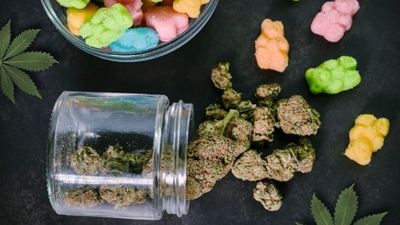A recent member survey conducted by CAA Manitoba has unveiled concerning statistics regarding the lack of travel insurance awareness and preparedness. Despite the financial risks associated with travelling unprotected, the survey found that 38 per cent of members in Manitoba who travel don’t always purchase emergency medical travel insurance, highlighting a potential vulnerability.
"In a world of uncertainties, our survey highlights a critical gap in travel preparedness among Manitobans," says Susan Postma, regional manager, CAA Manitoba. "At CAA, we believe in empowering travellers with knowledge so they can explore confidently and securely."
The survey also discovered that almost a quarter of respondents (24 per cent) ventured on their last trip outside the province without any form of travel insurance, exposing themselves to potential financial burdens in case of emergencies.
CAA Manitoba is launching its inaugural CAA Travel Wise Week
In response to these findings, CAA Manitoba is launching its inaugural CAA Travel Wise Week to emphasize the crucial importance of travel insurance education. The campaign aims to inform and educate Manitobans on the risks of inadequate coverage and provide valuable insights into securing appropriate protection for their travel adventures.
According to claims data from Orion Travel Insurance, the average cost of a medical claim has increased by 14 per cent since 2019.
“Costs associated with everything from an ear infection to the use of an air ambulance have risen over the last few years due to medical inflation, underscoring the continued importance of travel insurance for life’s unexpected complications,” says Postma.
As part of the CAA Travel Wise Week, CAA Manitoba has curated a list of the top
ten tips to help individuals stay protected against common travel concerns:
Top 10 Tips for Travel Protection:
- Make sure all your documentation is in order before you book. It is recommended passport renewals be completed six months before your planned trip. Your passport should still be valid six months after your travel date, as this is required in several countries.
- Read up on Government of Canada travel advisories for your destination. Understand the risk level associated with travel to a particular destination by checking the Government of Canada Travel Advice and Advisories website. Individual travel advisories remain on a country-by-country basis.
- Speak with your physician to discuss your travel plans. Speak to your physician to ensure you are up to date with needed travel vaccines and have them prescribe enough medication for the length of your trip. Ensure all the medication you take is packed in your carry-on and in its original bottles with labels intact.
- Consider purchasing travel insurance at the time of booking your trip. To lock in the best protection, book your travel insurance at the same time you book your trip. Doing so will give you the peace of mind that both you and your investment are protected. Insurance must be in place before things go wrong for you to benefit from coverage.
- Know the cancellation policies for everything you booked. Make sure you understand any key dates related to cancellation and changes, this includes accommodation, flights, car rentals, tours, cruises.
- Get to the airport early. CAA recommends arriving at the airport at least two hours before domestic flight departures and at least three for international flights.
- Check limits or restrictions. Travel insurance is often touted as a perk for certain credit cards but can be drastically limited to both benefits and the sum insured. Check limits or age restrictions on credit cards, employee benefits, and pensions to determine if you need additional travel insurance coverage.
- Stay connected. It is important to have access to trusted, up-to-date information while travelling so you can monitor changing conditions and requirements and adapt accordingly. Bookmark the Global Affairs Canada website prior to departure and check it regularly while abroad. It is also a good idea to sign up for Registration of Canadians Abroad. Find these and more information at www.caamanitoba.com/travel
- Note emergency contact numbers. Provide your travel agent with contact details while travelling abroad and keep all important phone numbers handy; this includes how to call for help and your travel insurance assistance phone number.
- Protect your ID. Make sure you have a digital version and paper version of your travel insurance wallet card, tickets to various events and attractions and even your passport. You may also want to leave a copy of important paperwork with family members or friends.
For more information, visit www.caamanitoba.com/travelwise
The survey was an online quantitative survey done with the CAA Members Matter Panel in Manitoba between September 22 - 29, 2023. The margin of error for a sample of this size is plus or minus 4.0% at the 95% confidence level.





